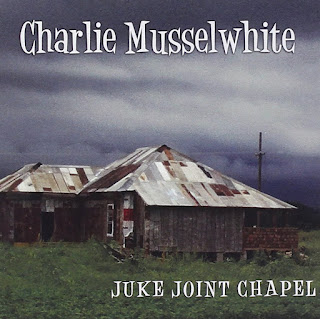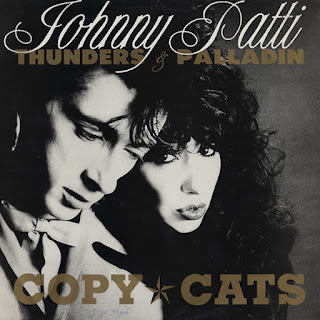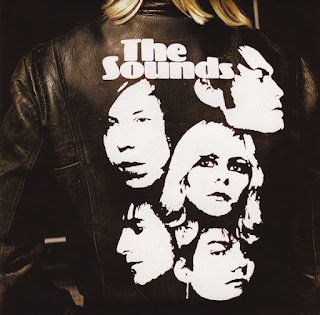Plagued by lack of promotion and label mismanagement for his albums – Parker would write the song “Mercury Poisoning” around this time about his label – and overshadowed by the commercial emergence of the similarly angry young artist Elvis Costello, Parker swung for the fences with his 1979 album, Squeezing Out Sparks. Working for the first time with producer Jack Nitzsche after making three albums with musician Nick Lowe, Costello channeled all of his piss-n-vinegar energy, emotion, and frustrations into songs like “Discovering Japan,” “Local Girls,” “Passion Is No Ordinary Word,” and “You Can’t Be Too Strong.” Squeezing Out Sparks would become Parker’s best-known, and most successful album, topping 200,000 copies sold and inching itself into the Billboard magazine Top Forty.
Graham Parker & the Rumour’s Live In San Francisco 1979
As Parker remembers in the liner notes for Live In San Francisco 1979, management put him and his band the Rumour on tour shortly before the March 1979 release of Squeezing Out Sparks and kept them out on the road, on two continents, for almost ten months. One of the early stops along the way was a two-night gig at the Old Waldorf in San Francisco in April, the second night of which was recorded by local radio station KSAN-FM for on-air broadcast.
This is the show that would later be used by Parker’s label for a promotional album titled Live Sparks that culled San Francisco performances of the ten songs from Squeezing Out Sparks, tacked on a couple of songs from a live broadcast on WXRT-FM in Chicago, and would be quickly sent out to radio stations to help provide momentum for Parker’s tour and album sales. The limited-edition, promo-only vinyl quickly became a coveted collector’s item, but would later become redundant in the CD age when included as a second disc on the 1996 reissue of Squeezing Out Sparks.
Live Sparks only told part of the story, however, while Live From San Francisco 1979, released by archive specialists Renaissance Records with its online partners It’s About Music, recreates a longer tale. Featuring a twenty-song performance by Graham Parker & the Rumour as recorded by the radio station, Live From San Francisco 1979 provides a valuable document of the band’s reckless live energy and Parker’s frenetic vocal pace. Whereas the sound on Live Sparks was always suspect – thin and full of echo – it has been markedly improved here, albeit at slightly less than studio quality. While portions of this performance have circulated among fans as bootlegs for years, none to my knowledge have ever included it in its entirety.
Squeezing Out Sparks
Parker performs his Squeezing Out Sparks album almost in its entirety on Live From San Francisco 1979, supplementing those performances with a healthy dose of material from his previous three studio discs. Kicking off with a crash-bang reading of “Discovering Japan” and slipping into a fast-paced version of “Local Girls,” Live From San Francisco 1979 jumps into an urgent performance of “Thunder and Rain” that includes some stellar fretwork from guitarists Brinsley Schwartz and Martin Belmont, Graham’s strident vocal gymnastics, bombastic drumbeats from Steven Goulding, and just beneath the surface, some great keyboards and special effects courtesy of Bob Andrews.
After ramping up the audience with three subsequent barn-burners, Parker & the Rumour deliver a swaggering look at “Don’t Get Excited” that befits the song’s syncopated electricity before launching into the pub-rock-flavored romp “Back To School Days.” A piano-led, tongue-in-cheek boozy roll in nostalgia, the band cranks it out here like Friday night at the local watering hole and their life depends on winning over the crowd. The aforementioned “Mercury Poisoning,” spit out here with all of the venomous intent of the original studio version, is one of the best songs written about the music biz. Directly targeting his former record label and its feeble attempts at promoting his music, Parker’s nimble wordplay is matched by an infectious chorus and kicked out with a punkish fervor of clashing instruments and angry vocals.
The older material easily fits in between the newer songs here, the band’s innate chemistry allowing it to change gears quickly from the swinging R&B rave-up “Heat Treatment” to the rockabilly-tinged “Clear Head” and the hard-rocking “Saturday Nite Is Dead.” The band’s cover of the Jackson 5 gem “I Want You Back” has always been one of my personal favorites, Parker’s reverent vocals doing a great job at expressing the romantic longing and loss of the original song. This live version is pretty cool, a little faster-paced than some performances, but Parker’s vox are still top-notch and the accompanying guitars bring just enough Steve Cropper/Stax Records flavor to mimic the Motown sound. Live From San Francisco 1979 closes with the anarchistic “New York Shuffle,” the song’s pub-rock vibe complimented by a little rockabilly guitar, honky-tonk-styled piano, and more than a little punkish intensity.
The Reverend’s Bottom Line
Live From San Francisco 1979 documents a road-weary Graham Parker & the Rumour that climb the Old Waldorf stage and kick out the jams with reckless aplomb anyway. The collection is a hell of a lot of fun, mixing Squeezing Out Sparks with the earlier material, and both Parker and the band sound absolutely energized by the loud-n-rowdy audience. More than anything, the album showcases an artist that never quite received the commercial pay-off that his passionate, intense, and entertaining music should have gotten. Luckily we have recordings like Live From San Francisco 1979 to remind us of just how damn good Graham Parker & the Rumour were back in the day. (Renaissance Records/It’s About Music, released October 25th, 2009)
Review originally published by the Trademark of Quality (TMQ) blog, 2010
















